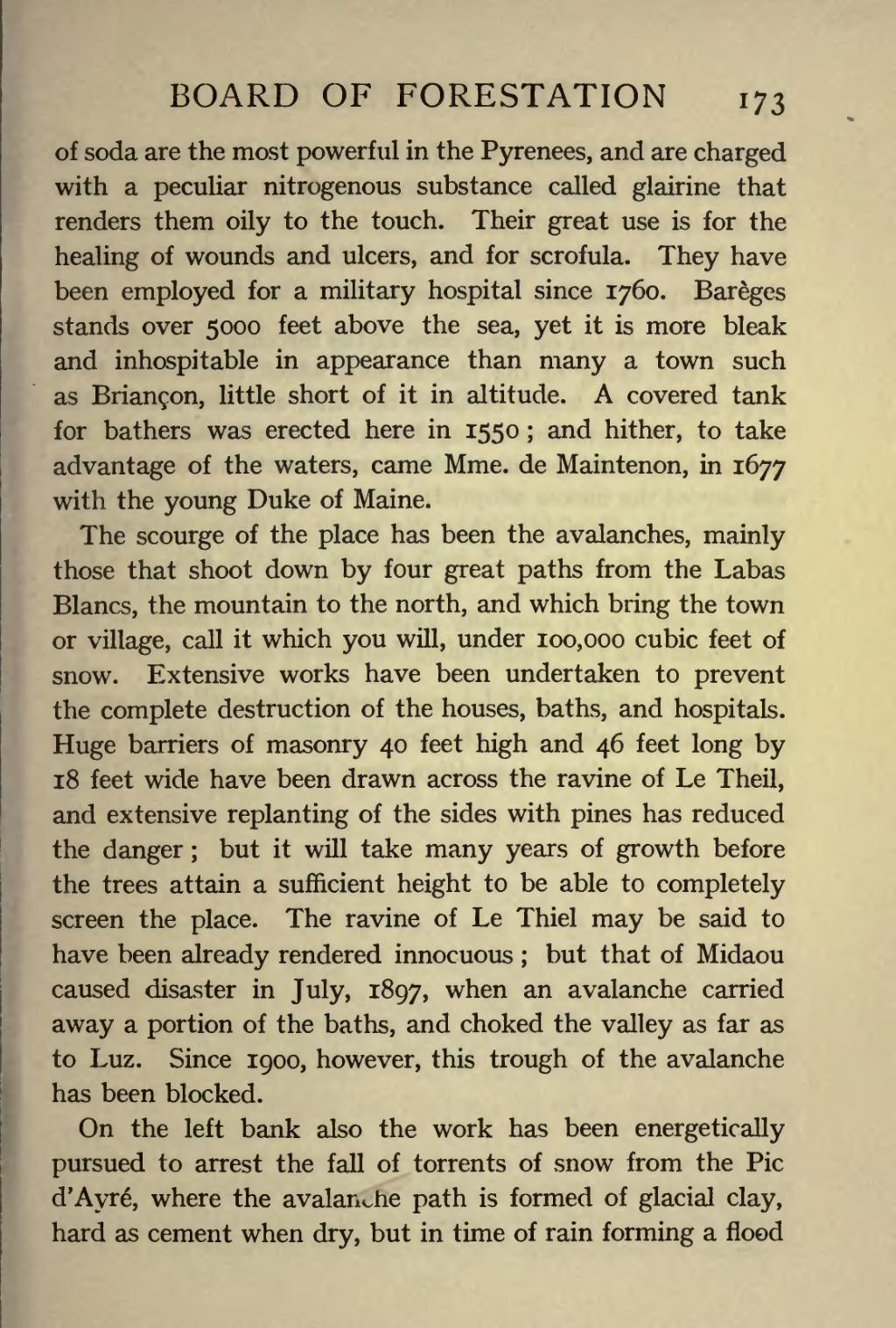of soda are the most powerful in the Pyrenees, and are charged with a peculiar nitrogenous substance called glairine that renders them oily to the touch. Their great use is for the healing of wounds and ulcers, and for scrofula. They have been employed for a military hospital since 1760. Barèges stands over 5000 feet above the sea, yet it is more bleak and inhospitable in appearance than many a town such as Briançon, little short of it in altitude. A covered tank for bathers was erected here in 1550; and hither, to take advantage of the waters, came Mme. de Maintenon, in 1677 with the young Duke of Maine.
The scourge of the place has been the avalanches, mainly those that shoot down by four great paths from the Labas Blancs, the mountain to the north, and which bring the town or village, call it which you will, under 100,000 cubic feet of snow. Extensive works have been undertaken to prevent the complete destruction of the houses, baths, and hospitals. Huge barriers of masonry 40 feet high and 46 feet long by 18 feet wide have been drawn across the ravine of Le Theil, and extensive replanting of the sides with pines has reduced the danger; but it will take many years of growth before the trees attain a sufficient height to be able to completely screen the place. The ravine of Le Thiel may be said to have been already rendered innocuous; but that of Midaou caused disaster in July, 1897, when an avalanche carried away a portion of the baths, and choked the valley as far as to Luz. Since 1900, however, this trough of the avalanche has been blocked.
On the left bank also the work has been energetically pursued to arrest the fall of torrents of snow from the Pic d'Ayré, where the avalanche path is formed of glacial clay, hard as cement when dry, but in time of rain forming a flood
